 Product Overview
Product Overview
Ceyear 1466-V series signal generator is a general-purpose test instrument designed for cutting-edge microwave and millimeter-wave testing applications. With wide frequency coverage, large RF modulation bandwidth, and high spectral purity, it delivers high accuracy, wide dynamic range output power, as well as excellent vector modulation precision and ACPR performance. Featuring a dual RF-channel architecture in a single unit and support for multi-unit cascading, the 1466-V series meets a wide variety of test requirements.
Its rich built-in functions, including analog modulation, digital modulation, fading simulation, and AWGN (Additive White Gaussian Noise) generation, make everyday testing more efficient and convenient. When used with simulation software, it enables multi-scenario signal emulation, making it ideal for supporting complex testing scenarios in wireless communications, mobile networks, and more.
1466-V series also features an upgraded human-machine interface, offering a range of new capabilities such as:
-
Large touchscreen with graphical guided interaction
-
Mobile browser-based remote control
-
Multi-brand power meter recognition
-
Multi-client deployment
-
SCPI command recording
-
Customizable user interface
-
Baseband waveform preview
These enhancements deliver a significantly improved user experience and testing satisfaction.
As a result, the Ceyear 1466-V series signal generator is an ideal solution for high-standard testing from component-level to system-level applications.
 Key Features
Key Features
Exceptional Spectral Purity for Confident Advanced Testing
The Ceyear 1466-V series signal generator supports high-purity spectral signal output. The typical single sideband (SSB) phase noise is -145dBc/Hz @1GHz carrier with 10kHz offset, and -132dBc/Hz @10GHz carrier with 10kHz offset. The typical wideband noise floor at 20GHz is -161dBc/Hz @30MHz offset. Spurious signals are typically less than -80dBc and harmonics are below -55dBc at a 10GHz carrier.
With such clean signal output, 1466-V series ensures that microwave and millimeter-wave component, system, and OTA testing are free from interference, giving you greater confidence in your measurements.
|
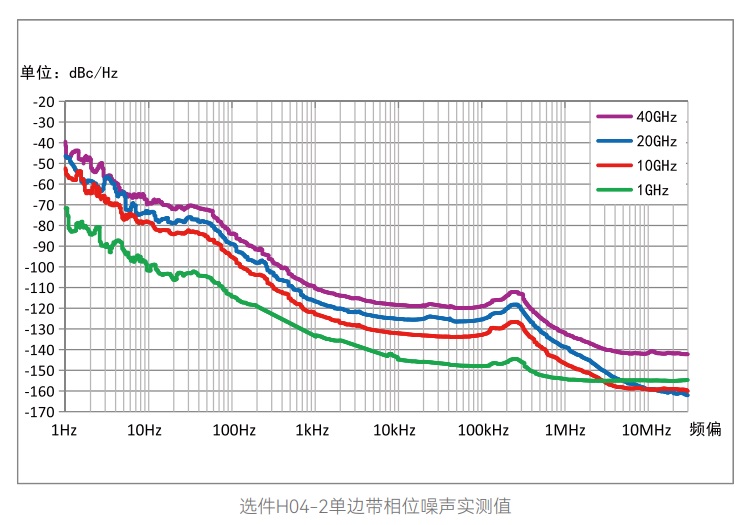
|
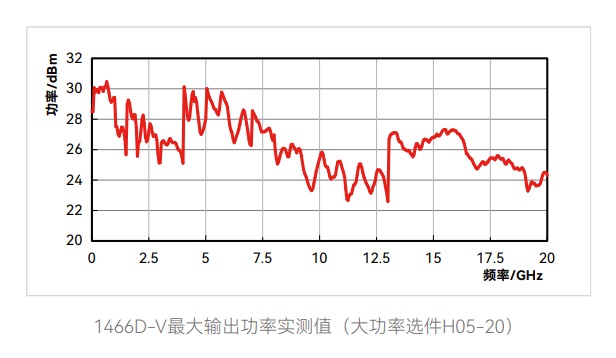
|
Wide Dynamic Range and High-Accuracy Power Output
The Ceyear 1466-V series signal generator delivers excellent output power performance, with typical maximum power of:
-
+27 dBm at 5 GHz
-
+24 dBm at 20 GHz
-
+25 dBm at 30 GHz
-
+22 dBm at 60 GHz
The minimum output power can be set as low as -150dBm, providing a dynamic range of over 170dB. The instrument also features outstanding power accuracy, with a typical uncertainty of less than ±0.5dB (below 20GHz).
|
2GHz RF Modulation Bandwidth, Effortlessly Meeting Broadband Test Challenges
The Ceyear 1466-V series signal generator offers a maximum RF modulation bandwidth of 2GHz. Depending on the application scenario, it supports flexible configuration with optional bandwidths of 500MHz, 1GHz, or 2GHz. When using external wideband baseband signal input, the RF modulation bandwidth can reach up to 5GHz.
Whether for today’s 5G communications or the upcoming 6G applications, the outstanding modulation bandwidth performance ensures that even the most demanding tests can be carried out with confidence and efficiency.
|
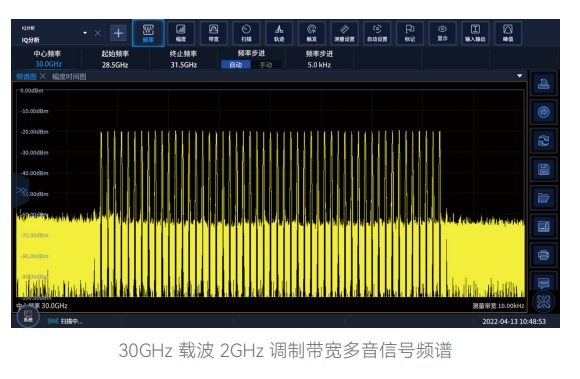
|
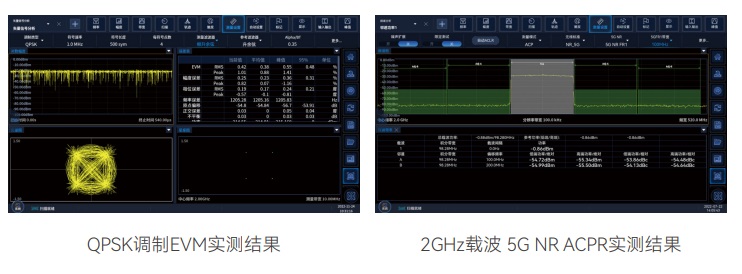
|
Excellent Vector Modulation Accuracy, Ideal for Communication Equipment Calibration and Testing
The Ceyear 1466-V series signal generator delivers outstanding vector modulation accuracy, with a measured QPSK modulation EVM of 0.4% (at 2GHz carrier). It also features excellent adjacent channel power rejection, with 5G NR ACPR < -55dBc @ 2GHz carrier (typical) and < -45dBc @ 42.5GHz carrier (typical).
This high level of performance makes the 1466-V series well-suited for performance evaluation during communication equipment R&D, as well as quality inspection in production environments.
|
Multi-Unit Cascading for Multi-Source Coherent Excitation
The system supports multi-unit cascading, providing a solution for testing MIMO, beamforming, and signal diversity applications.
|
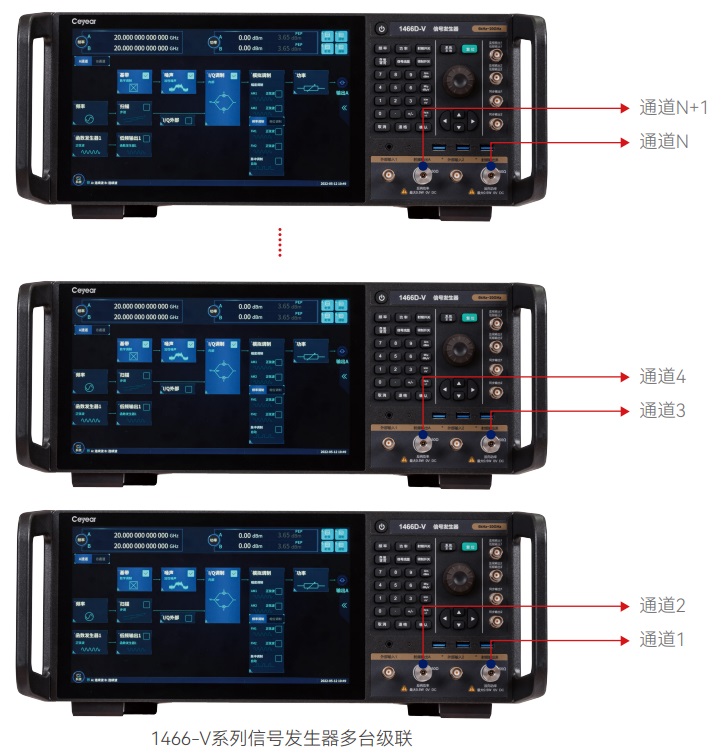
|
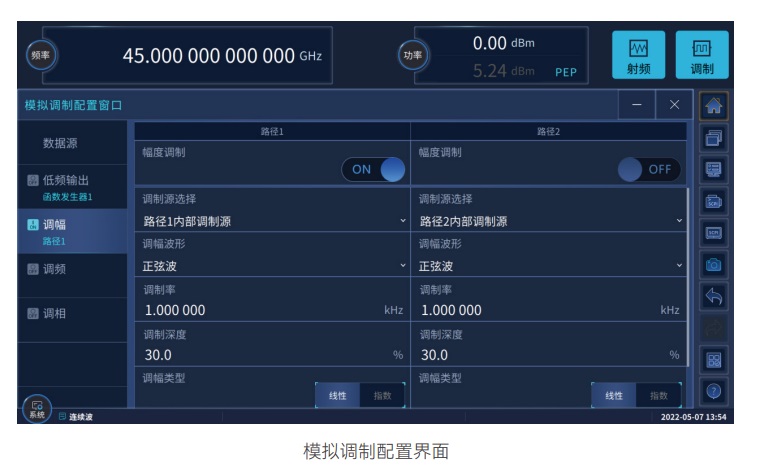
|
Comprehensive Analog Modulation Capabilities
The instrument supports amplitude modulation (AM), frequency modulation (FM), phase modulation (PM), and pulse modulation. It also features advanced pulse modulation functions, including dual pulses, pulse trains, PRI stagger, PRI jitter, and PRI sliding, enabling the generation of complex pulse signals for demanding applications.
|
Versatile Sweep Functions
The instrument supports various sweep modes, including step sweep, list sweep, analog (ramp) sweep, and power sweep, providing flexible solutions for different testing requirements.
|
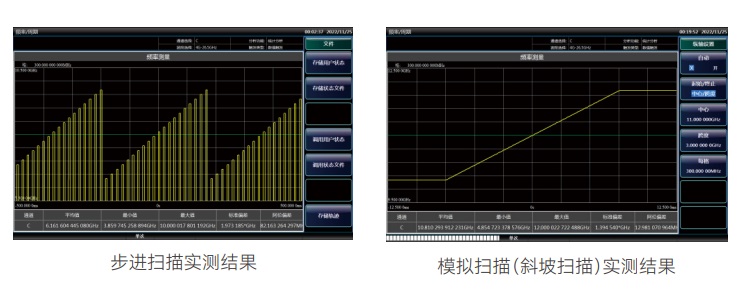
|
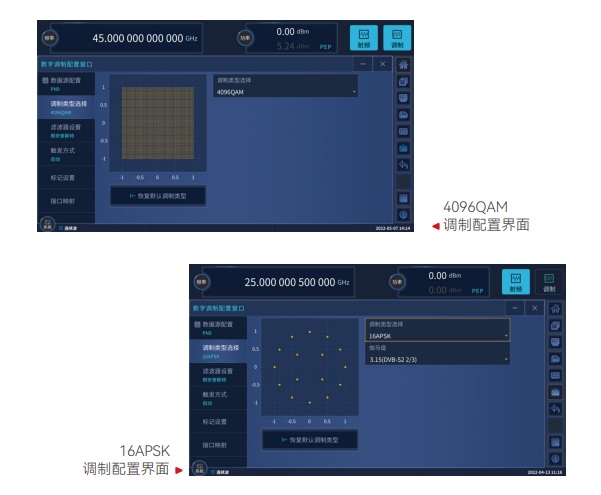
|
Comprehensive Digital Modulation Formats
The instrument can generate more than 30 standard digital modulation signals, including PSK, FSK, QAM, and APSK, covering all the key frequency bands and modulation formats essential for digital communications.
|
Arbitrary Waveform Playback
The instrument supports user-defined arbitrary waveform data playback with variable sampling rate. Combined with the convenient baseband preview function, it allows you to verify the correctness of your data in both time domain and frequency domain at a glance.
|
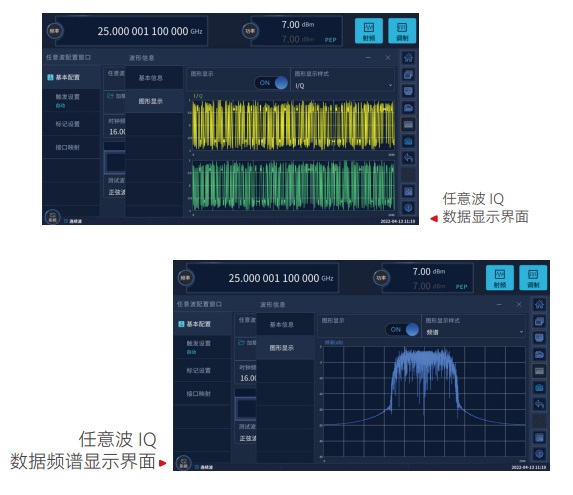
|

|
Multi-Carrier Support
The instrument supports continuous-wave multi-tone generation and complex multi-carrier modulation, making it easy to build and test complex signal scenarios.
|
Multiple Noise Types
The instrument supports various noise generation functions, including pure noise, additive Gaussian noise, and continuous wave interference, providing flexible options for simulating real-world signal environments.
|
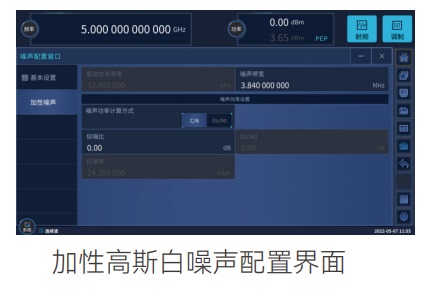
|
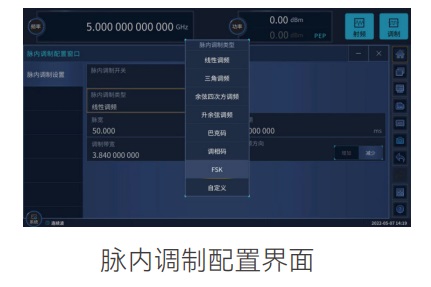
|
Intra-Pulse Modulation
The instrument supports multiple types of intra-pulse modulation, including linear frequency modulation (LFM), Barker code, and phase-coded modulation, enabling the generation of complex pulse signals for advanced radar and communication applications.
|
Real-Time Fading Simulation
The instrument supports up to 20 fading paths, and offers a variety of fading types including pure Doppler, Rayleigh, Rician, and Rayleigh + Lognormal. It also provides predefined fading scenario modes and can simulate 3GPP-defined fading channel models, making it ideal for testing wireless communication systems under realistic propagation conditions.
|
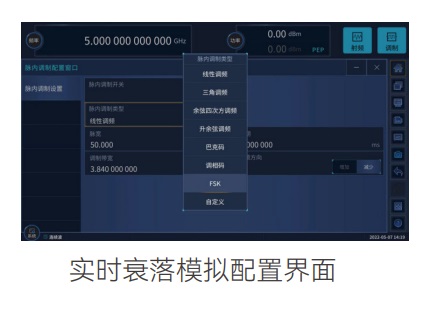
|
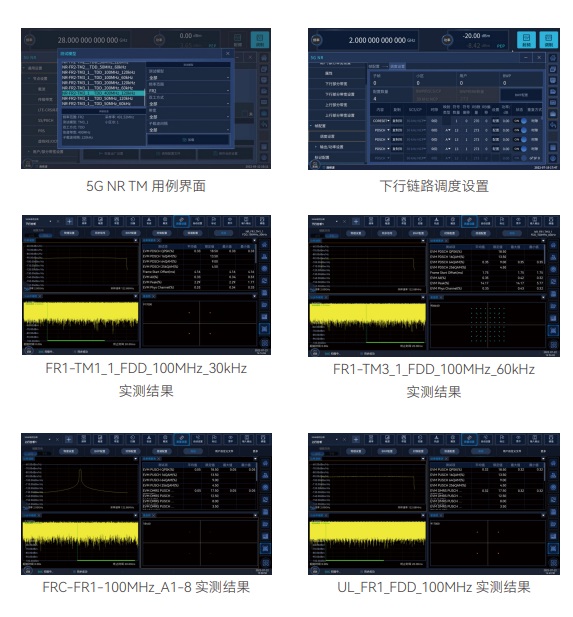
|
Mobile Communication Signal Simulation
Designed for the research, production, and verification of mobile communication base stations or terminals, as well as for RF conformance testing required in mobile equipment certification, the Ceyear 1466-V series signal generator features over 600 built-in Test Models/FRCs, including support for 5G NR, enabling one-button simulation of standard protocol signals.
Additionally, when used in conjunction with mobile communication signal simulation software, the instrument allows flexible editing and simulation of various communication protocol signals, providing a powerful solution for advanced wireless testing.
|
WLAN Signal Simulation
Designed for testing wireless communication terminals during R&D and production, the instrument supports simulation of 802.11a/b/g/n/ac/ax wireless connectivity signals, including PPDU, MPDU, and A-MPDU formats. It also supports physical frame block signal simulation composed of multiple PPDU signals with different modulation and coding schemes (MCS), enabling realistic and comprehensive WLAN testing.
|

|

|
Touchscreen Graphical Guided Interaction
Featuring an 11.6-inch high-resolution touchscreen, the instrument clearly displays key parameters and device status information. Combined with an intuitive signal flow diagram guidance interface, it offers a more visual and user-friendly experience, making operation and monitoring more straightforward and efficient.
|
Customizable User Interface
The instrument supports user-defined menus, allowing users to customize the control interface according to their testing habits. This enables multi-function operations within a single window, eliminating the need to navigate through deep menu structures and reducing the hassle of repeated searches for settings.
|

|

|
Cross-Platform Client Control Support
The instrument supports cross-platform client access and browser-based remote control. Multiple clients can connect simultaneously, with the instrument's operating status refreshing in real time across all connected devices. It also supports web browser access and control from mobile devices, providing flexible and convenient remote operation.
|
SCPI Command Synchronization Recording and One-Button Script Generation
The instrument not only allows for one-click export of recorded SCPI commands, but also automatically generates programmable control example projects in VS (C++, C#), Qt, MATLAB, and LabVIEW, making remote control and automation significantly easier and more efficient.
|

|





 Product Overview
Product Overview



















 +86 18988756718
+86 18988756718 WeChat
WeChat